Hit Netflix show Stranger Things has been celebrated for its both its engaging plot and its homage to science fiction pop culture from 1980s. One futuristic feature which goes as far back as the 1980s is a technology that was also a key asset behind the scenes of the show.
That technology is Stereolithography (SLA) 3D printing, pioneered by Hideo Kodama in Japan and Alain Le Mehaute in France before being patented under the current name by Chuck Hull in 1984. SLA was used by Aaron Sims Creative (ASC), the studio behind the visual effects of Stranger Things to create the iconic Demogorgon, the series’ hair-raising, flesh-eating humanoid monster.

Practical-digital humanoid hybridity
The Duffer Brothers, the creators of Stranger Things, asked ASC to create a practical effect for the for the Demogorgon, as they wanted to capture the authenticity of 1980s sci-fi productions.
Unlike digital effects, which are computer generated and make up the vast majority of effects used in productions, practical effects are produced by hand and were used extensively in the 20th century.
The creative approach that ASC settled on was a a hybrid practical and digital one. A purely adopting digital designs would mean sacrificing the 1980s zeitgeist that the show’s creators had requested. A purely practical strategy would be both time consuming and difficult to implement for a monster that could run at superhuman speeds and eat people. With the strategy decided, the creative process could then begin.
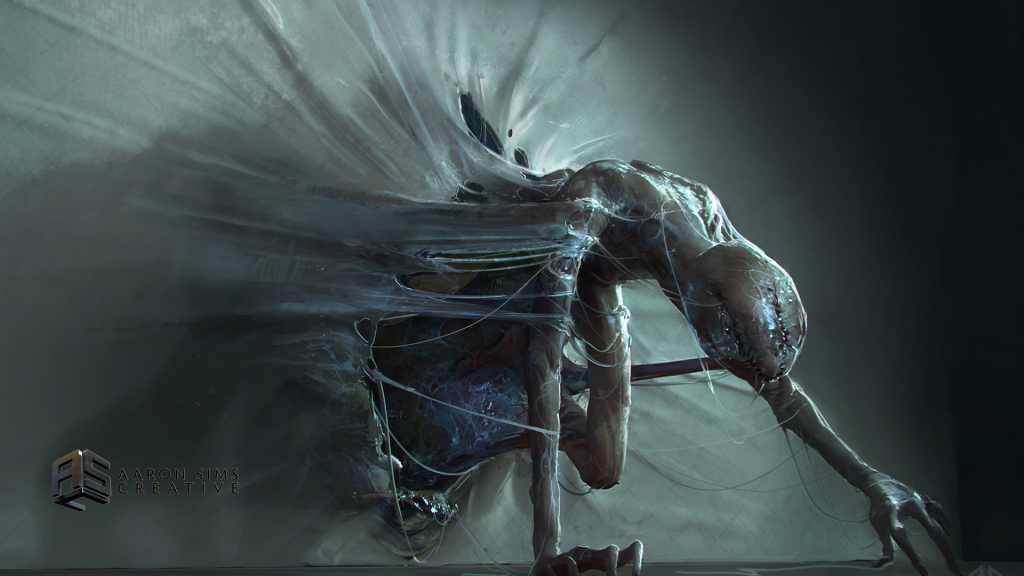
Sketch, Screen and Scream
ASC president Aaron Sims was the first to sketch out the realisation of the image, from non-specific guidelines provided by Stranger Things executives. The collaboration between the ASC and Stranger Things’ executives occurred throughout the process of creating the Demogorgon.
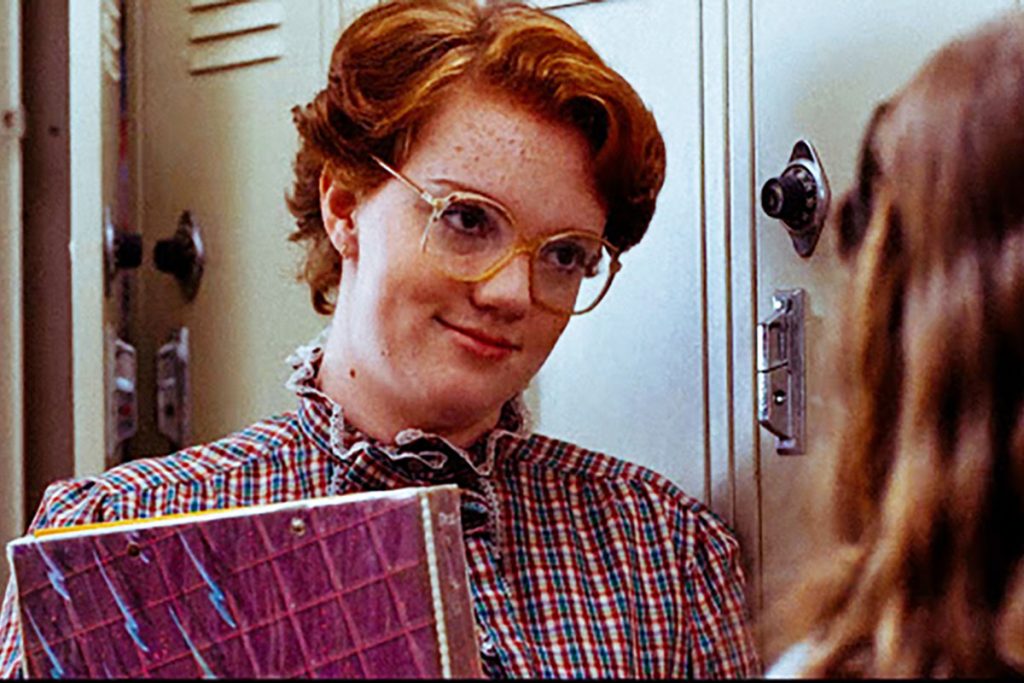
The initial sketches bore the characteristic humanoid body, flowering head and sharp teeth characteristic of the Demogorgon. After finishing and approval from the executives, ASC’s graphics team turned the design into a digital rendering.
While this would usually be the end of the contemporary visual effects process. With a monster as eccentric and pivotal as the Demogorgon, however, providing a 3D copy of the end result was important.
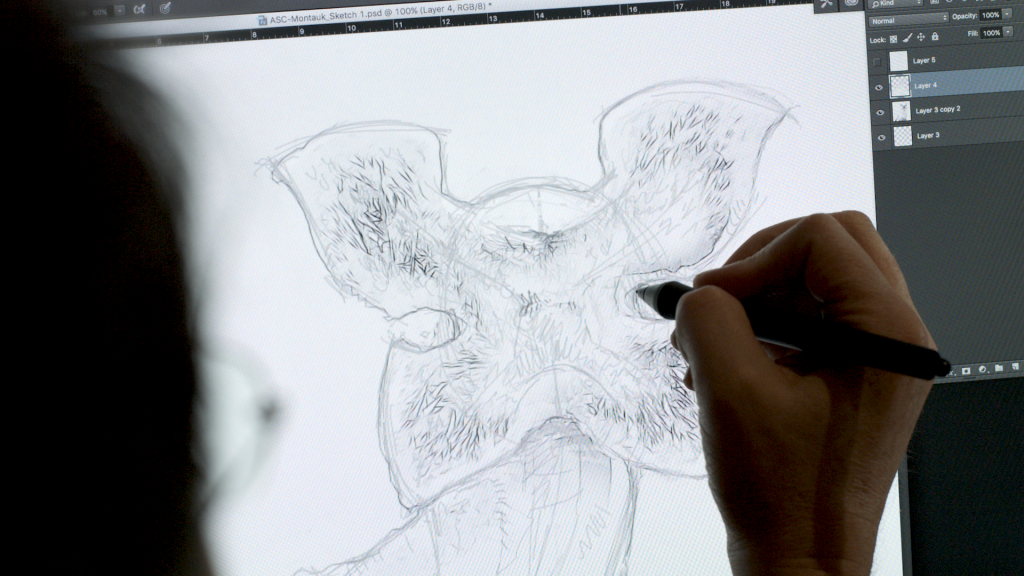
Modelling a monster
“It seems like a lot of producers and directors want to keep that practical aspect in play. People really want to keep the physical.” said ASC VP Steffen Reichstadt. When pitching a creative idea in a meeting, prototyping and designing purely digitally means that there is no physical point of reference.
While Sims himself was experienced in traditional manual modelling, with the production schedule, “we don’t have the luxury to do a sculpture here because of time”. 3D printing held the solution. Using an in-house Formlabs SLA 3D printer, smaller prints were created before larger models were then 3D printed and then manually painted.
“Printing something off for clients really solidifies that that concept is where they are going to go, because they can see it in front of them, they can turn it around,” Reichstadt explained, “(if) they’re going to spend a couple of hundred million dollars on the film, they want to know that the design they are picking is the correct one.”
Sims said that the Demogorgon model “was one of the first prints we did…and the first results were amazing,” and according to Reichstadt, the model allowed ASC “to get tacit approval from the directors early on.”
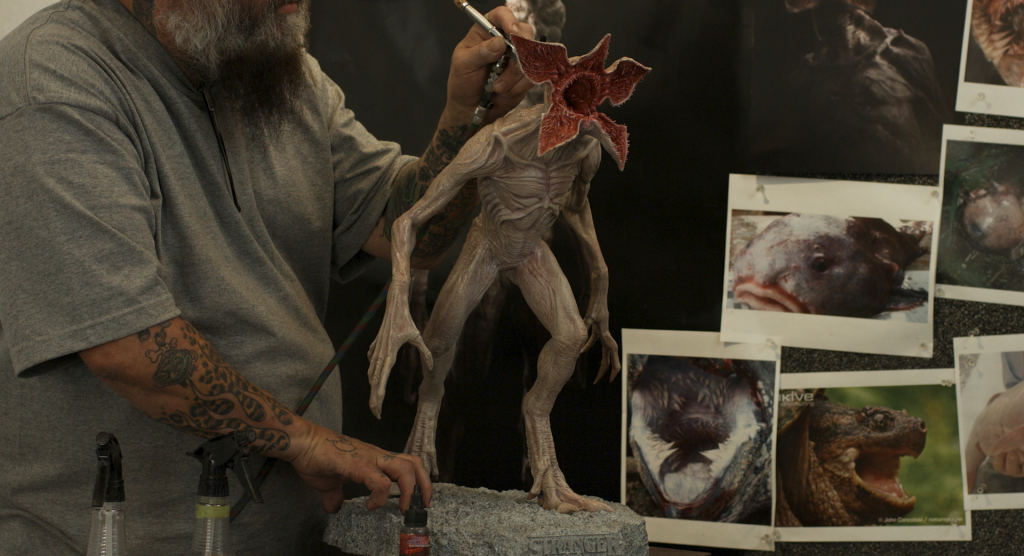
Lifeforce
After the final character was approved, a combination of practical effects, motion capture and CGI brought the Demogorgon to life during production and post-production.
Since character creation wasn’t an entirely digital or CGI pipeline the model helped the studio assess how the character could be realised on set. “It had to do things that a practical guy in a suit just couldn’t do”, Sims explained. “The fire, we shot real fire,” Reichstadt added, “the slime in the mouth on the creature, we digitally simulated slime.”
The hybrid approach also had to be implemented quickly and efficiently because of the production of television shows. “My background being practical,” Sims explained, “we always try to figure out the simplest method that’s going to make it the most effective, the most realistic, and not overbuilt.”
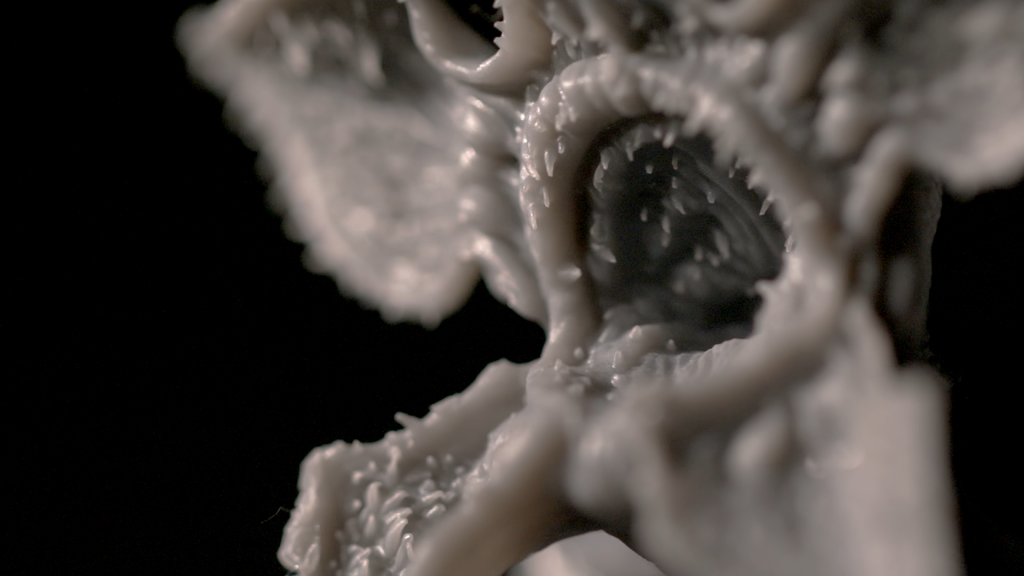
Back to the future
In industry, especially startups and small businesses, prototyping and tooling parts on demand using CAD tools and 3D printing, saves the time that would otherwise be wasted with lengthy manufacturing processes. The visual arts and film industries are now benefiting.
“It’s interesting to think about, as the printing technology get better, as the materials get better, how that’s going to play a bigger part in integrating with the digital stuff we do” said Reichstadt, noting that the studio is already working in new methods of combining the two. “The real success story here,” he continued, “was how the the two processes complemented each other.”
For Sims, the new tools and technology have ensured that both classically trained and digital artists will have a place in realising visual effects projects. “The imagination is endless,” he said, “and who knows where it’s going to go in the future”.
They Live
While the current Demogorgon model has yet to be available as a 3D printable model, designers across the web have created some seasonally spooky FFF models ready for Halloween.
“I hate snakes,” a treasure chest inspired by the 1981 classic Indiana Jones film “Raiders of The Lost Ark”. Mood lighting not included.

Jason Voorhees rubber ducks for bathtime, inspired by the hockey-masked antagonist of the “Friday the 13th” films.

And finally, a dancing skeleton.
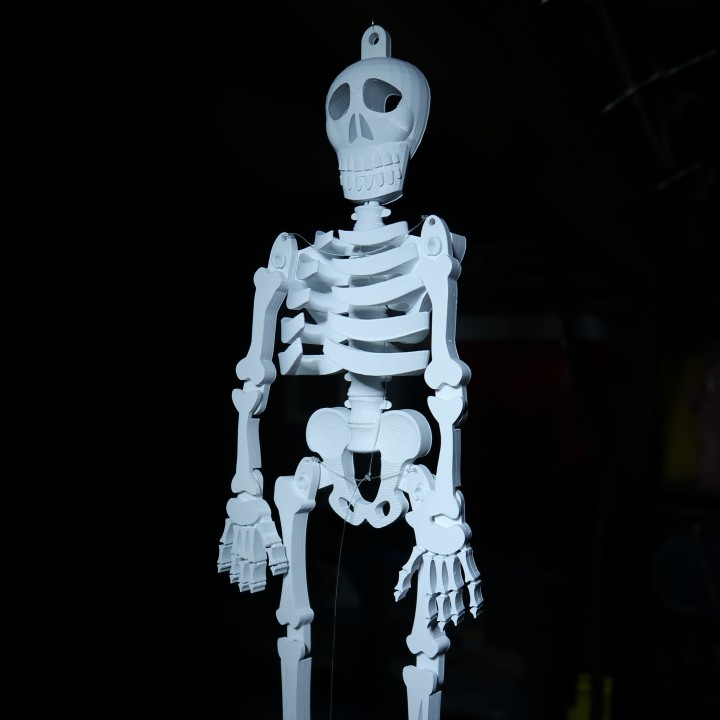
To see more spooky 3D printing in entertainment, subscribe to our free 3D Printing Industry newsletter, follow us on Twitter, and like us on Facebook.
Featured image shows a 3D printed, hand painted Demogorgon model that was presented to the Stranger Things executives. Photo via Formlabs.


